Lei Fengnet (search "Lei Feng Net" public concern) : This article was originally published in English website Sixth Tone, compiler Wei Wu Hui, coached at Shanghai Jiao Tong University School of Media and Design, Tianqi Amoeba fund investment partner.
oneChina’s public opinion field has always paid considerable attention to the investment of the private internet giants in the media.
This concern follows the acquisition of Hong Kong South China Morning Post and investment Caixin Media Group in Alibaba (investors are in the form of Ant Financial Services, theoretically, Alibaba and Ant Financial Services have no equity relationship, but the controlling person is Ma Yun). Reached a peak. Public opinion once again sealed the title of "media empire" to Alibaba.
However, if you carefully study and judge , it is not just Alibaba that is interested in building media empire .
In fact, another Chinese digital giant, Tencent, whose main revenue comes from the 100 billion club members of the game industry, also has a strong interest. In China, there are only Tencent and Alibaba.
Baidu, which was once classified as BAT and has not performed well in recent years, has fallen from US$80 billion to US$60 billion to US$60 million. Although there is no major media investment or acquisition, its media properties cannot be underestimated. One of the biggest revenues for online advertising in China is Baidu.

According to iResearch data, it and Ali together divided up more than 50% of the market share. (Note: Due to the fact that IRes has turned against the headlines today, the latter announced that it would cease cooperating with them. Therefore, Irene’s monitoring does not have this headline claiming billions of advertising revenues a year. If the headlines are counted, Baidu’s market accounted for Ali. There may be a slight decrease in the ratio.)
twoIn China, the so-called “self-media†(main forms: personal websites, blogs, microblogs, or WeChat public accounts) run by individuals are set aside. Agency media are broadly divided into three levels. And in these three levels, an important logic is: Which category of news qualification is obtained/unauthorized.
China has classified news as a kind of special licensing act. Institutions that engage in news business need a permit (such as the newspaper's issue number), while individuals need a news reporter’s card – this is a document that is issued only to employees of state-owned media. When leaving the company, the document should be withdrawn (or voided), so theoretically there is no such category as an independent reporter or citizen reporter. After the rise of the Internet, the special permission behavior of news was split into two types, which correspond to two types of Internet news information service licenses.
The first one comes from "traditional media." China currently has nearly 2,000 kinds of newspapers, nearly 10,000 periodicals, nearly 5,000 television stations and 3,000 radio stations. With the exception of a few magazines, most traditional media are "state-owned media." After the launch of the website, many have the so-called "First Class Journalist Qualifications," which is a type of Internet news information service permit that allows for the launch of an interview business. This article is called Class A media.
In the past, Class A media refused the extra-curricular capital. In 2000, the Xishan Conference of the Central Propaganda Department stipulated that “news sites must not be allowed to be listed without financingâ€, and later gradually evolved to accept institutional investment, but insisted on state-owned holding. Some Type A media are publicly listed on the domestic stock market, but they adopt the “separation of acquisition and management and business operationsâ€, that is, the acquisition and editing business is not listed, and the operating department is stripped into a corporate entity for listing.
The second category is not a state-owned system. Portals, for example, originated from privately-owned start-up companies and a small portion of them landed on overseas securities markets. They have second-level news qualifications, that is, second-class Internet news information service licenses. They can create original news in A-media by establishing partnerships. Theoretically, they do not have the right to interview because they can't apply for news reporter badges for employees. In areas such as sports, entertainment, and technology, the actual operations are actually conducting interviews. This article is called Class B media.
Class B media may have investment behaviors in Class A media, but except for a few magazines, it is basically impossible to acquire Class A media. The South China Morning Post will be fully acquired by Ali because it is not a mainland media. However, Class B media may wholly acquire another B media or C media.
The third type has more and more institutionalized operations. The number of companies is as small as several people and as large as one hundred or more, but there is no news qualification at any level. Generally only have the lowest level ICP record, and even ICP licenses are not available. However, they are still the media, with their own websites, Weibo, WeChat public number, and even APP. Many are also engaged in news publication business, even original interviews. This article is called Class C media.
In the eyes of many people, Class C media is "from the media" - although this is a big misunderstanding. Class C media includes self-media, but its extension is far more than the latter.
This is the current situation of institutional media in the digital world of mainland China.
The BAT giants' media campaign has mainly developed through relations with these three types of media.
threeTencent wholly owns its own Class B media: Tencent.com. This is the second-ranked mass media site in China's desktop Internet.

Tencent is a standard horizontal portal, and almost all of the desktop website features that can be seen are equipped. On the mobile side, the Online Media Group, which is part of Tencent's network, has also developed a converged news client such as the Tencent News Client and the Daily Express, which is a first-line competitor in this field.
Tencent also established “big†prefix websites in various provinces and cities to expand its local portal services into local life services. This line of business started in May 2006 in Daxie, a website that cooperates with the Chongqing Daily Newspaper Group, and basically pushes at least one new local portal every year. As of now, Tencent already has 13 local portals for “big†prefixes: Chongqing (Dalat), Shaanxi (Daqing), Sichuan (Dacheng), Hubei (Da Chu), Fujian (Dalat), and Guangdong (Da Yue) , Henan (Dayu), Hunan (Daxiang), Shanghai (Dashen), Zhejiang (Dazhe), Liaoning (Dalian), Jiangsu (Dasu), and Beijing-Tianjin-Hebei (Dayan).
A common feature of these local portals is that they are not strictly independent websites. Instead, they use subdomain systems. For example, Dashen.com's domain name is sh.qq.com. This approach makes it unnecessary for these websites to apply for news qualifications. Because they can follow the news qualifications owned by Tencent.
There is no information on how much capital Tencent has invested in these big header websites. However, Da Shen Net and Da Yue Network have reported profitable news respectively. Some of Tencent's websites are operated by Tencent alone, but some cooperate with local traditional media groups to strengthen local operations. Most of the latter are Tencent shareholders ranked second, but Dashen and Guangdong, Tencent holds more than 50% of the shares.
In China, all the media (including personal self-media) once favored the operation of Sina Weibo. However, since Tencent released the WeChat public account platform in 12 years, the interests of the media have apparently changed from Weibo to WeChat. After all, WeChat is Chinese people use the most frequent mobile applications. The WeChat public account platform itself cannot be considered a media, but nearly 20 million WeChat public accounts operating on the platform have more or less media attributes.
Almost all Chinese agency media have at least one WeChat account number.
Whether it is initiative or forced, institutional media are all trying to make a good relationship with WeChat.
Tencent also conducts some investment in the media industry. Tencent, for example, is a shareholder of Caixin, a domestic financial media. The shareholding ratio is unknown, but it is not Caixin's largest shareholder. Caixin’s largest shareholder is Li Ruigang’s Chinese cultural industry fund. In Class A media, Tencent had cross-shared with the listed company Borui in July 2013 and became an indirect shareholder of the daily economic news of Chengdu Business Daily, a subsidiary of Borui Communication.
In addition, Tencent announced in 2015 that it completed the investment in the domestic famous question and answer website “Zhihuâ€, which is a social media platform with a social relationship chain. There are rumors that Tencent intends to invest in barrage video sites that are very popular after the 90s (commonly referred to as station B), but there is no conclusive news confirmation.
fourTencent's investment in the media line has a close relationship with its business. To sum up, there are two sentences: sink and connect.
Sinking means Tencent attaches great importance to local businesses and likes to promote one province and one province. In the old SP service (text messaging), Tencent showed the characteristics of this bite-sized meal. Its operation path is to enable the local SP special service number, rather than the national SP special service number, the provinces slowly. The big prefix website is a typical example of Tencent's media operation.
Linking together means that Tencent attaches great importance to the investment of social relationship chain, although it itself has the strongest social service QQ and WeChat in China. Zhihu is a website with a social chain, but at the same time, because of the Q&A business, its media properties are extremely strong, and there is not much conflict with QQ and WeChat. Instead, it is a very good content supplement.
In addition, Tencent pays considerable attention to the “connection†with young people and maintains its appeal to young people from generation to generation. The so-called hands-on social products, WeChat and QQ, the latter focus on young groups. QQ is on the mobile side, and there are similar content platforms such as the WeChat public account.
Tencent's investment in, or operation of, the media is not based on public relations, but it has in fact formed a certain public relations effect.
Tencent founder Ma Huateng recently stressed that Tencent only does two things: content and connectivity . Behind these two words, media attributes are completely impossible to avoid. If done well enough, the media's attributes will become objectively strong.
By the way, Tencent everyone.
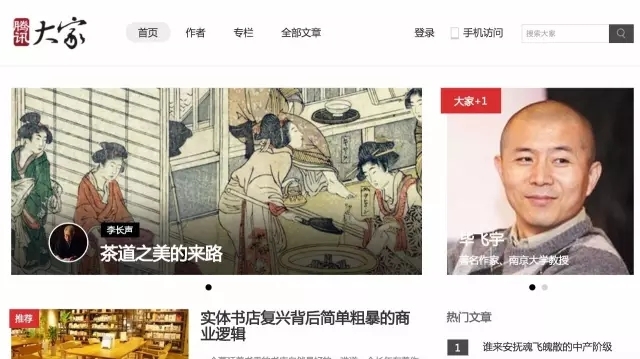
This is a very money-burning channel. Unlike Baidu Baijia, it pays authors direct payment, and according to the general situation in the country, the rewards are generous. It is also different from Baijia, which focuses on Internet technology and emphasizes social issues. In layman's terms, it is publicly known.
For a company like Tencent, the business is complex and it is easy to have a social impact. Everyone has a positive effect on Tencent's own brand reputation.
FivesBaidu rarely has a large-scale investment in the media industry. This may be related to its business attributes.
Baidu.com is the website with the highest number of desktop internet traffic in China. Although the content of Baidu's own production on the Baidu website is extremely low, due to the characteristics of search engines, it has become an important major node for media traffic distribution on the desktop.
Tencent invests in and operates media businesses for its other businesses. Tencent’s own advertising revenue accounts for a relatively small proportion of Tencent’s huge income volume. In 2015, Tencent recorded advertising revenue of US$2.256 billion, but its overall revenue. Up to 15.841 billion. Baidu is totally different. 98.86 billion of Baidu's $10.248 billion in revenue over the same period came from online marketing. Baidu itself is a media company that relies heavily on advertising revenue.
The relationship between Baidu and the media is more of a cooperative relationship. For example, when the Upper Poster Group was established, Baidu Shanghai (http://sh.news.baidu.com/) was formed in cooperation with Baidu. Baidu Shanghai has occupied the position of the channel category in Baidu News. However, there is no single-tier channel such as Baidu Beijing and Baidu Guangdong.

Baidu also has a Baidu Baidu section, mainly based on the authors of third-party Internet technology. The mode of operation is that the author uploads his own articles. The advertising income on the article page becomes the author's writing income. However, Baidu sometimes pays additional fees. For example, this article was Baidu's official invitation and was first published in Baidu Baijia.
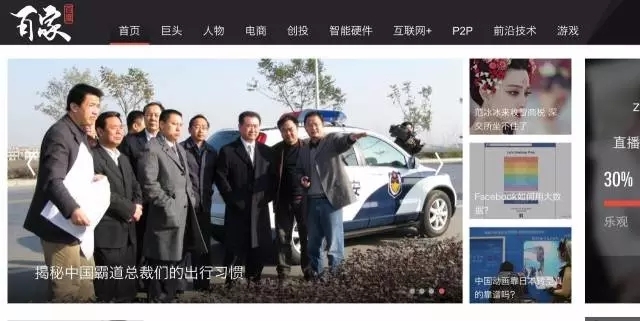
Baidu Baijia has a strong PR effect, regardless of its initial motivation. Because the author relies on advertising revenue, and advertising revenue depends on whether Baidu recommended this article (100 Baidu home page, or even Baidu News home page). It can be imagined that Baidu unfriendly articles are hard to get 100 recommendations.
In the desktop era, Baidu's negative news is relatively small, and even when it comes to the so-called "3S Wars" with 360 search, there are not many negative comments. However, in the mobile Internet is in full swing today, Baidu's guidance on public opinion has obviously been beyond its means.
The sticking bar crisis that erupted in 15 years stems from Baidu’s authority to manage the disease. This has caused strong dissatisfaction among the public welfare people and the patients. Several highly influential crusade against Baidu have been circulating in the WeChat system, and Baidu cannot do anything about it. Afterwards, the person in charge of Baidu's public relations business was notified of the penalty and deducted part of the bonus for the year.
Baidu’s own business is also struggling to find a breakthrough point on the mobile side. On mobile media, Baidu has lost the significant influence on the kind of traffic distribution portal on the desktop.
sixAli has always had a passion for the media industry.
After Ali obtained Yahoo China’s right to operate from Yahoo in the early years, Ma Yun listed it as one of the “Five Fingers of Dharma†to show that Yahoo China ranks among the five most important products in the entire Ali system. However, Yahoo China has been swinging in search or portal positioning. Eventually Ali will give up Yahoo China and withdraw from the portal, search, and even the mailbox business.
Ali does not have his own first-line media site, but the investment in the media is very large and has a certain relationship with his business.
Due to its location in Hangzhou, Ali worked very early with the Zhejiang Daily Newspaper Group to run two magazines: "Taobao Tianxia" for buyers and "The World Online Merchant" for sellers. The former hopes that after readers find suitable products Taobao.com purchases, while the latter helps sellers to better manage their online stores. However, in accordance with the rules of the domestic media industry, Ali is not a controlling shareholder in these two magazines, but it has deep involvement in the business.
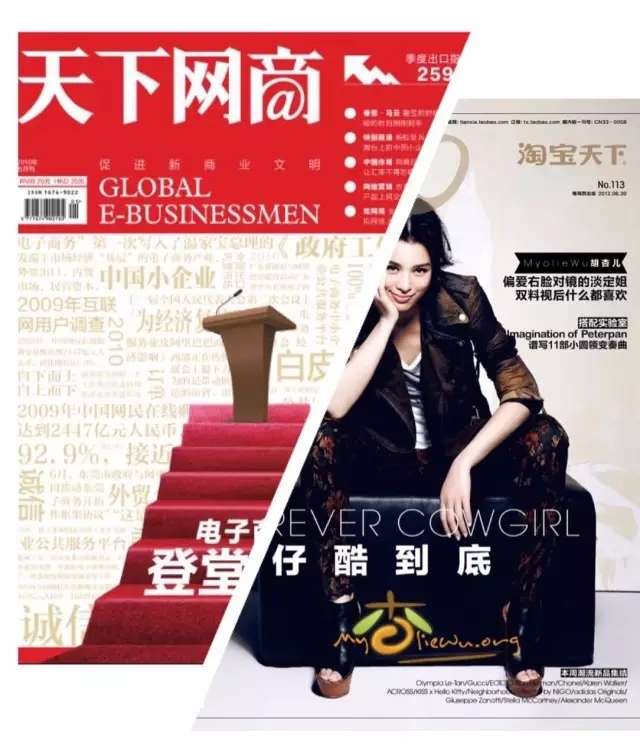
If Baidu is most dependent on advertising revenue and Tencent is the least dependent on advertising revenue, Ali will be the center. Ali's Tmall platform can charge service fees for transactions (ranging from 3 to 15 points), but its other platform, Taobao, claims to be free of commission. There are 6-8 million sellers on the platform. In order to get the buyer's attention, these sellers continue to pay Ali's promotion fees.
Due to too many sellers, the promotion position is relatively limited, and Ali's traffic becomes more and more expensive. Since Ali blocked the link from Baidu to ensure its promotional income is effective, Ali must consider providing relatively cheap traffic to the seller, otherwise the seller will die in large quantities because he cannot afford the promotion cost. Ali is an internet company with a very thirsty traffic.
Ali's consideration is that there must be a large amount of traffic for its use, but these flows must be controlled - that is, these companies that introduce traffic, Ali should have the right to speak. On the one hand, Ali banned the domestic shopping guide platform, Beauty, and Mushroom Street. On the other hand, Ali invested in the domestic social media Sina Weibo. There were also rumors that Ali was trying to acquire a wholly-owned company.
Ali also cooperated with some local newspaper groups. The specific method was to print the QR code of a business or a commodity in a newspaper, hoping to lead newspaper readers online to online shopping.
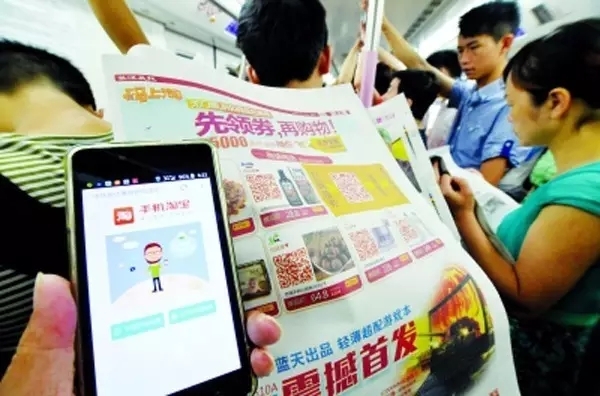
Ali launched Taobao’s headline, specifically for guide-type media. The intent of Taobao's headline is clear: to activate retail transactions to a greater degree.
With Alipay splitting out of Ali and becoming an independent Ant Financial Company, Ali is also rapidly expanding in the area of ​​Internet finance. Based on business needs, Alibaba invested 36% in this site, which started after technology media started up and was involved in private equity crowdfunding.
However, Alibaba invests and operates the media. The purpose of public relations is very obvious. After the domestic science and technology media sniffed for Ali’s investment, the latter’s investment was the head of Ant Financial’s public relations department. Another media, “Unboundedâ€, established in cooperation with Xinjiang Internet Information Office and Financial Magazine, and the director proposed by Ali is the public relations officer of Alibaba Group. The Ant Financial Service in Ali Line has recently become one of the shareholders of Caixin Media Group, but it has a small share.
On the desktop, Baidu controls the traffic distribution entrance. On the mobile side, Tencent's WeChat public number is the largest public opinion field. Ali does not have key products to guide public opinion. Therefore, its investment in the media has strong public relations concerns.
SevenAfter entering the second decade of the 21st century, BAT has encountered an extremely serious public relations crisis, which has attracted widespread public attention in the Internet field. At the time of the crisis, the image has been tumbled.
The three crises are: Tencent's 3Q Wars, Alipay VIE events and Baidu's Post Bar incident.
In July 2010, Qihoo 360 Company, which was not yet listed, initiated a challenge to Tencent. Tencent was forced to require users to install “360†to be unable to run QQ. In this campaign, apart from Tencent's own Tencent network, almost no media are on the Tencent side.
Before the outbreak of the 3Q war, domestic magazines used Tencent’s Tencent as the cover title to comprehensively criticize Tencent.

After the 3Q World War, Tencent convened opinion leaders in the industry and held ten consecutive closed-door meetings to review the successes and failures and reflect on them.
In June 2011, Alibaba unilaterally separated its Alipay business from the group and established an independent company, which caused its shareholders Yahoo to no longer have an interest in the Alipay business. Because Alibaba is a VIE architecture, it is called Alipay to VIE events. This caused public opinion at the time. Because of the unilateral contractual breakdown of the contractual relationship, it is obviously contrary to what Ma Yun has repeatedly claimed to be the "spirit of good faith."
This incident triggered a public crusade against Cai Shuxin, the editor-in-chief of Caixin, and Ma Yun was forced to communicate with his long-form short message. Alibaba’s head of public relations expressed publicly on Hu Wei’s dissatisfaction with Hu Shuli.
The VIE structure built on the basis of contracts is a commercial system arrangement commonly adopted by Chinese Internet companies listed overseas. The Alipay VIE incident triggered doubts from U.S. investors about Chinese Internet concept companies.
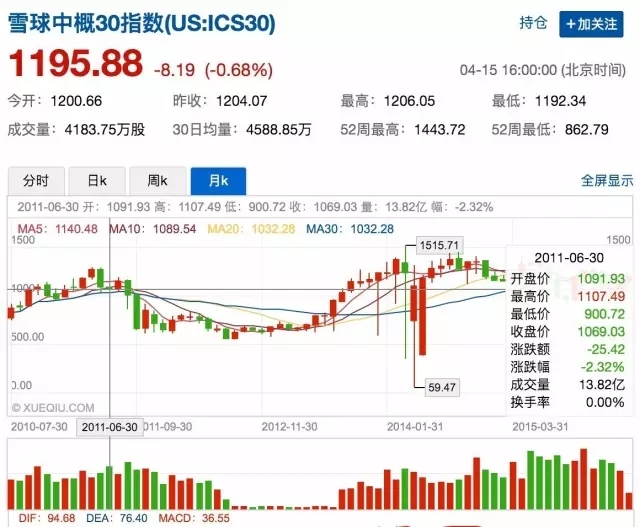
(The snowball index of 30 shows that after June 2011, the stocks in the stock market were lower.)
In 2016, Baidu sold a number of disease-themed bars, including hemophilia, causing a strong rebound in public opinion. The doubter believes that this will cause a large number of patients to encounter all kinds of pseudo-medical quacks, delaying treatment. Some commentators claimed that Baidu was an old thief, and some critics said that Li Yanhong was not even worthy of the public’s enemies.
These negative articles are widely found in the WeChat public accounts and spread rapidly in the circle of friends through the spread of the virus. Baidu Public Relations is helpless, causing Li Yanhong's strong dissatisfaction, saying that public opinion was completely taken away.
EightThe position of the public relations department in BAT is not the same.
In Tencent, the public relations department is not an extremely important department. After the 3Q World War, Tencent awarded the title of "President" of the head of public relations. And the public relations department and the advertising marketing department with a huge promotion budget are not the same department.
In Ali, the Public Relations Department is a very important department. Ali is the highest head of public relations, and is a member of the decision-making level of Ali, and has led many investment in the media. Ali's public relations and advertising marketing are not clear.
Baidu's public relations department is in the middle, neither is it important in the Tencent system nor is it important for the Ali system. The person in charge of the former public relations has been transferred from the charge of the Internet finance business, and the public relations business is under the control of the president of Baidu. However, it is widely believed that Li Bai, another vice president of Baidu who is responsible for the mobile business, is also the first product manager of the Bar, and the person who has the “Baidu Prince†is more dependent on him.
There is very little evidence that BAT’s investment in the media is rewarded with huge direct business benefits. It has to be said that BAT has a public relations purpose. This includes the two layers of PR (for public relations) and GR (for government relations). Although the influence is not as great as before, Class A media are still very important under the specific conditions of China. BAT's investment in Type A media (as well as investment or cooperation) has the factor of capital being closer to resources.
However, due to the different positions of their respective public relations departments, their input to the media is different. Tencent invests very little in A-media, Baidu barely, and Ali is the most enthusiastic. In Class B media, Baidu has almost no Tencent Ali is equal.
The three crises mentioned in the previous article have just passed, and it is almost impossible for the 3Q battle to reoccur on the WeChat public dominating the public opinion field today. As for the Alipay VIE incident, it is still estimated that it cannot be extinguished.
nineTo sum up, the digital giant’s media “complexâ€.
First, we can eliminate the business model based on the media itself. Ali Baidu’s advertising revenue is very large, but it is not due to investing in the media. Under the Tencent system, media advertising revenue accounted for a minor proportion.
One of the motivations is to invest in media for the needs of their own business. The Internet is, in the final analysis, an attention-oriented economy. Grasping attention will help the more efficient operation of its own business model.
The purpose of public relations, including government public relations, is also one of the motivations. However, Tencent and Baidu emphasize the use of product drivers to achieve de facto public relations, while Ali adopts extensive extensive investment in the media. In the desktop era, Baidu's effect is better. In the mobile era, Tencent is better.
The "rejection of outsiders" of Class A media is no longer possible today. The influence of Class B media is rising in a straight line, and it is mixed with a large number of C-media that may become B-media in the future. The three major categories of media, A, B, and C, all have BAT's shadow shaking.
(The references to China in this article refer to mainland China unless otherwise specified. Hong Kong, Macau, and Taiwan are not included. In addition, this article does not involve digital giants in the media industry.)
Translator's Note: This article was written after the incident, Wei Zexi before the incident, so this article did not mention the latter. In addition, after Baidu imitated Google to make a corporate framework adjustment, the importance of related personnel has changed. For example, the importance of Li Mingyuan.
ONEREEL`S INJECTION MOULDED PLASTIC YARN CARRIER DYE TUBES / DYE CONES FOR YARN STEAMING & DYEING, BOBBINS, RING SPINNING TUBES & OTHER PLASTIC PARTS IN VARIOUS POLYMERS AND ALSO STAINLESS STEEL DYEING MACHINES ACCESSORIES
ONEREEL have specialized in the production of Plastic/Polymers mold and Tool making for the Textile & associated industries for over 35 years. The development in winding technology, Yarn package formation and the Yarn Dyeing equipment have led to greater utilisation and productivity and at the same time improved the quality of the yarns and their running properties. The Dye packages and Tubes are most important for an optimum Dyeing Cycle. The main features of an optimum Dye package are :
Conicity
Winding Technique
Package Face
Package Edges and Tubes
Under the trade name 'ONEREEL', marketing permeable Cylindrical Tubes and Cones for Yarn Dyeing. An important advantage of Cylindrical Packages or Cheeses is that the liquor flow is effected symmetrically towards the center line of the package. Above all, the liquor flow is more favorable when dye tubes with a large diameter are used. The tubes from 'ONEREEL' permit the same uniform flow throughout the package. Moreover, a better utilization of the volume is achieved than with cones replacing conventional cones with cheeses, guarantees an optimal levelness of Dyeing and offers significant advantages from an economic point of view.
'ONEREEL' ADVANCE PRODUCTS TO REDUCE COSTS.
'ONEREEL' product range having variety of items intended for every stage of yarn production, preparation for Spinning (Ring, Open-end, Self acting), Twisting, Winding and Package Dyeing.
'ONEREEL' product range has been improved since few years with highly innovative and patented Yarn carriers in order to satisfy the necessities of the Package Dye sector especially which is under high development. The Policy of all new systems is the research to match the best Dyeing result with the easiest method to use yarn carriers; means to reach the following results that only the right Yarn Carrier can guarantee.
Saving time while loading on the Dye vats.
Automated loading simplification.
Yarn compression production increases.
Complete reliability & quality of yarn carrier in all production stages.
THE 'ONEREEL' MOULDED PLASTIC PRODUCT RANGE FOR TEXTILE INDUSTRIES INCLUDES
SPEED FRAME TUBES / RING SPINNING TUBES / YARN CARRIER DYE TUBES
OE (OPEN END) TUBES / CHEESE TUBES/ SPEED FRAME TUBES
2-FOR-1 TWISTER TUBE / FLYER BOBBINS
CYLINDRICAL WINDING TUBES
ONEWAY & REUSABLE UNIVERSAL PERFORATED TUBES
ONEWAY PRESS PERFORATED DYE TUBES
(For Winding Machine and Double Twister)
CYLINDRICAL PERFORATED DYE TUBES
(For Winding & Open-end Machines)
CONICAL PLAIN WINDING TUBES 4º 20`
CONICAL PERFORATED DYEING TUBES 4º 20`
CONICAL PERFORATED WINDING & DYEING TUBES 5º 57`
(One Way & Multi way)
CONICAL & CYLINDRICAL PERFORATED SULZER TUBES
(Preferably for weft feeding at gripper and Air Jet Weaving Machine)
SEPARATORS AT RING SPINNING AND TWISTING FRAMES.
DYE PRECISELY WITH 'ONEREEL' PP (PLASTIC) DYE TUBES, CONES & BOBBINS
DYE TUBES & CONES
DYEING MACHINE ACCESSORIES
PLASTIC PERFORATED DYE TUBES & CONES
PERFORATED CONES & CYLINDERICAL TUBES
PERFORATED TUBES, WINDING CONES, CHEESE TUBES
TEXTILE YARN & FIBER DYEING ACCESSORIES
YARN PACKAGE DYEING – DYE TUBES – DYE CONES
PLASTIC TUBES FOR WINDING YARNS
YARN CARRIERS
PLASTIC PARTS, CONES, DYE TUBES
CONES & CHEESES, RIBBON BOBBINES ON FLANGE DYE TUBES OF METAL & PLASTIC DYE TUBES
PLASTIC PERFORATED DYE TUBE SUITABLE FOR FONG`S, THEN & OTHER YARN DYEING PLANTS
AND ALSO-..YOUR `SINGLE SOURCE` SOLUTION OF DYEING ACCESSORIES FOR OUR FULLY DEVELOPMENT PRODUCT SUITABLE FOR
YARN & FIBRE DYEING MACHINES
HTHP BEAM DYEING MACHINES
JET DYEING MACHINES
LIKE
Triangular Dye Spindle
Perforated Tubes
Locking Caps with Bolts/Plates
Spacers for Dye Cones
Head / Base Plates
Dye Cones / Tubes
Complete Carrier with Spindle
Main Circulating & Injection, Booster Pump & Spares
Mechanical Shaft Seals of all types & sizes.
Rubber Door Sealing Gaskets & other Rubber parts
SPARE PARTS & ACCESSORIES SUITABLE FOR ........
Yarn & Fiber Dyeing Plants
HTHP Beam Dyeing Plants
HTHP Jet Back Dyeing Plants
Normal Temp. Jet Dyeing Plants
HTHP Duper High Speed Jet Dyeing Plant
Soft Flow Roto Stream Jet Dyeing Plants
'ONEREEL' PLASTIC DYE TUBES & CONES ARE THE ULTIMATE IN PLASTIC DYE TUBES & CONES FOR HIGH PERFORMANCE YARN STEAMING & DYEING.

Yarn Bobbin,Dyeing Bobbin,Roving Bobbin,Ring Bobbin,Cylindrical Bobbin,Cone Bobbin
NINGBO BEILUN TIAOYUE MACHINE CO., LTD. , https://www.spool-manufacturer.com